#garden kit
Text
Medicinal Garden Kit

importance of a Medicinal garden kit
A medicinal garden kit is a collection of seeds, plants, or herbs that are traditionally used for medicinal purposes. The plants in the kit may be used to make natural remedies, teas, or infusions to treat a variety of ailments. Some common plants that might be included in a medicinal garden kit are:
Aloe vera: used to treat burns, wounds, and skin conditions
Chamomile: used to promote relaxation and treat anxiety, insomnia, and digestive problems
Echinacea: used to boost the immune system and treat colds and flu
Lavender: used to treat anxiety, insomnia, and skin conditions
Peppermint: used to treat digestive problems and headaches
There are many different types of medicinal garden kits available, so you can choose one that suits your needs and interests. Some kits come with everything you need to get started, including seeds, soil, pots, and instructions, while others may just include the seeds or plants.
#gardening#home and garden#garden tips#home decor#seedsowing#farming#garden kit#vegetables#save money
11 notes
·
View notes
Photo
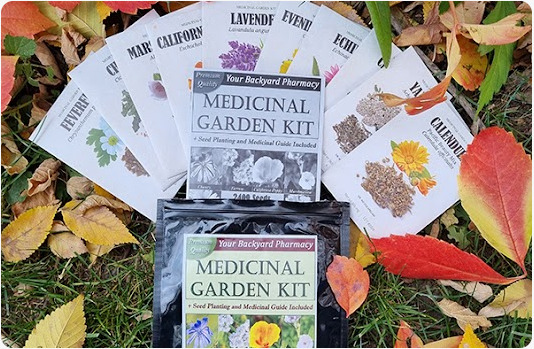

Medicinal Garden Kit - The Most Important Thing That's Probably Missing From Your Backyard
Inside your Medicinal Garden Kit, you’ll find 10 smaller packages with each type of seed. 2,409 high quality seeds packaged in US.
Even if you’ve never planted anything before, you’ll have no trouble growing these 10 plants. You will find details on how to plant, grow, and harvest each one in the free Medicinal Guide you'll receive with your Medicinal Garden Kit.
To get a Medicinal Garden Kit click here
You cannot find these 10 seeds in one package anywhere else. Before I made it, I had been looking for something like this for a long, long time.
And I would have been willing to pay A LOT for it. Just think about how much money you spend at the pharmacy. The average American spends $1742 each year. I think your new backyard pharmacy will save you at least a few hundreds of that. That's what I call a good investment.
To get a Medicinal Garden Kit click here
#medicine plant#garden kit#medicine#natural pharmacy#backyard medicine#plants#natural medicine#health
3 notes
·
View notes
Text
The Most Important Thing That's Probably Missing from Your Backyard: Medicinal Garden Kit
In a crisis, people will turn to plants once again for both food and medicine.
And there are some plants that will vanish faster than all others.
So, the only way to make sure you have them when you need them is to grow them in your own backyard. Get it Now
Comment Down Your E - Mail ID. We are giving 5 medicinal garden kit for free.
#medicine plant#garden kit#medicine#natural pharmacy#backyard medicine#plants#natural medicine#health
2 notes
·
View notes
Text
✖️ MEDICINAL GARDEN KIT - DOES IT REALLY WORK OR NOT? SEE EVERYTHING NOW!!!
youtube
#youtube#review#reviewproduct#product#supplement#productsupplement#youtube review#review product#reviewsupplement#medicinal garden kit#medicinal garden kit review#garden kit
1 note
·
View note
Text
Medicinal Garden Kit Reviews 2023 -Medicinal Garden Plants To Grow In Your Home Garden
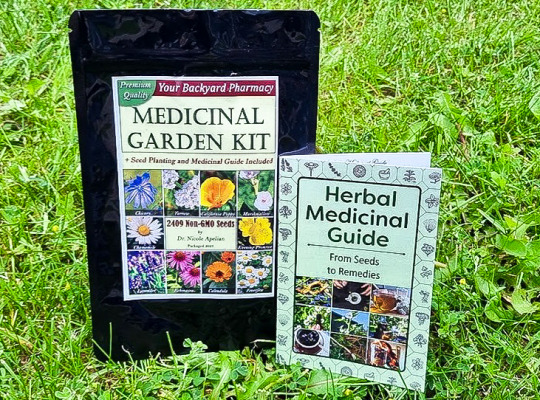
Nicole Apelian created the package, which contains 10 potent herbal seeds that can assist us in bringing relief from disease. Furthermore, there is not need to be concerned about how to take care of them because the package includes a comprehensive instruction booklet on how to utilize these therapeutic plants.
What is medicinal Garden ?
The herbal seeds in the Medicinal Garden Kit include all of the antioxidants and nutrients that we need in our diet. Having a little backyard pharmacy is a worthwhile investment because it may be used in times of discomfort, severe diseases, and cold and fever.
Various reports and research show that elderly individuals need to spend time in a beautiful natural setting to relieve their minds from everyday stress and improve their mental abilities.
People nowadays are aware that medicinal medicines are comprised of chemicals and have several adverse effects, but they continue to use them to treat their medical ailments. They are also aware that numerous medicinal plants are accessible to treat their health problems, but due to a lack of understanding, they are unable to obtain them.
The world is moving too quickly, and everybody is working too hard to make money while disregarding their health. They understand it later in life, but it's too late.
Pharmaceutical firms withhold the fact that some plants have therapeutic properties from the general population. We are grateful to the creator of the Medicinal Garden Kit for revealing that anybody may cultivate the 10 best, most potent medicinal plants in their garden or backyard. They can eat these plants as part of their regular diet or to treat a health condition. It can cure them organically and cost-effectively without any adverse effects.
These plants from the Medicinal Garden Kit are rich in vitamins and minerals that can help the body maintain its energy levels as we age. Additionally, certain plants include anti-inflammatory, anti-bacterial, anti-viral, and antioxidant properties that help to relax the brain and promote deep sleep by reducing stress, discomfort, swelling, and inflammation.
Get from the official website
Basic Understanding Of The Medical Garden Kit
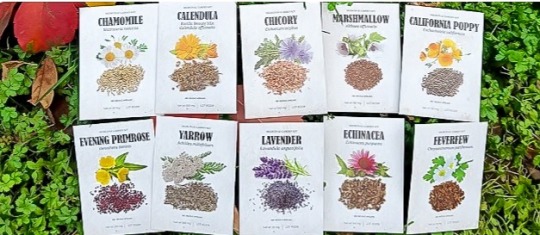
In order to inform people about which plants have potent effects on the human body, Medicinal Garden Kit also offers an ebook. Additionally, kids learn how to utilize and cultivate it naturally in this booklet without the usage of insecticides. They can create their garden at home in the backyard or any area that receives direct sunshine in this way.
Additionally, trees and plants are excellent for the environment because they produce clean, fresh air that is good for the human body in general and the lungs in particular. Elderly patients are generally advised to take a morning stroll to breathe in the pure air from the plants and trees.
The medicinal garden kit teaches how to cultivate them as well as how to care for them so they continue to live for years after being used.
Everyone may utilize this medicinal garden kit, even those with no prior gardening experience. Users of this book may learn all about the advantages of 10 incredibly hardy medicinal plants for healing and enhancing their nutritional intake. Users may create a natural home pharmacy that offers a wide range of health advantages for themselves and their family.
Topics for the Medical Garden Kit Book
. Marshmallow, Chicory, California Poppy, Yarrow, Evening Primrose, Chamomile, Lavender, Calendula, Echinacea, and Feverfew are among the ten most potent plants.
. Information in-depth on how to grow and harvest these plants and seeds.
. How these plants are harvested and transformed into tinctures, decoctions, ointments, poultices, salves, infusions, and essential oils.
. How to cook with these plants on a regular basis.
. Describe how each plant is beneficial to human health.
. Which plants have soothing and meditative properties?
. Covers some herbal treatments for disorders with the immune system, digestion, skin, and damaged nerves.
. How long should it be ingested for before it relieves inflammation and conditions linked to pain?
. How to shield these plants against storms, severe weather, and cyclones.
. How to store extra fruit for survival or disaster scenarios.
Get Medical Garden Kit in discount price
Creator of the Medical Garden Kit
The Medicinal Garden Kit was developed by renowned naturalist, survival instructor, and Ph.D. Nicole Apelian, not by an average person. She earned a biology bachelor's degree from McGill University and has lived her entire life around these plants and seeds.
She resides in the oldest San Bushmen society, where people eat only what their earth provides. They rely on these plants for both sustenance and medicine, and they never visited a hospital or utilized prescription medications until they were quite old.
She first discovered the illness known as Multiple Sclerosis when she was only 29. Medically speaking, it is incurable when the brain and spinal cord are attacked by dangerous germs produced by the immune system. These folks must use wheelchairs for the remainder of their lives.
From there, he becomes inspired to discover a natural method of treating MS. She discovered a revolutionary treatment for multiple sclerosis after 20 years of study, and now she grows it in her backyard. Additionally, she made it through 57 days of alone in the Atlantic Ocean, which was documented on the National TV channel.
In her backyard garden, she also produces a variety of plants that are used to cure a wide range of health conditions, including nausea, skin infections, body pain, headaches, urinary tract infections, bowel movements, constipation, gas, stomach discomfort, and much more.
The Medicinal Garden Kit Package was made by Dr. Nicole, who selected all of these plant seeds herself.
10 of the Best Medical Plants for a Medicinal Garden Kit

1 . Healthy Digestive System: Marshmallow
It is a perennial plant of European and Western Asian roots. Ancient people utilized these herbs to treat stomach and bowel discomfort and inflammation.
Its leaves and root contain a special substance called mucilage that enters the digestive tract and coats the intestinal tract, stomach, and colon to help the body quickly reduce inflammation.
Many Medicinal Garden Kit testimonials claim that they blended in daily tea to treat conditions including heartburn, inflammation of the urinary system, constipation, and stomach ulcers.
2. Antibiotic chamomile
The chamomile flowers and leaves will be used to make chamomile oil. To obtain chamomile oil, which is beneficial for the digestive system to cure GI tract disorders like indigestion, flatulence, anorexia, diarrhea, vomiting, nausea, and motion sickness, ancient people used to manually pluck these flowers and dry them.
Additionally, this oil is quite helpful for skin conditions including wrinkles, sunburns, poor color, acne, and pimples.
According to researchers, chamomile oil lessens the appearance of aging by fortifying the skin's outer layer against attacks from free radicals caused by environmental pollutants.
It also goes by the name "Doctor Plan" since it promotes the growth of nearby plants.
3. Yarrow: A Healer of Wounds
Another name for yarrow, a flowering plant from the Asteraceae family, is Achillea millefolium. Yarrow helps wounds heal rapidly and without leaving any scars.
a study done on a guy whose finger was injured while gutting fish. The blood could not be stopped, and the pain was excruciating. They encircled the injured area with yarrow. The bleeding stopped right away within two minutes, although there were still some scars. Wrap it everyday for 15 days, and all scars will go without the need for antibacterial medications. It is listed in the Medicinal Garden Kit because of this.
4. Herb for Reducing Inflammation: Lavender
The pleasant floral aroma of lavender blooms makes them simple to recognize. Many shampoos, hair growth oils, and lotions include lavender oil.
Lavender oil was formerly used to cure hair loss. Every day, a few drops are applied directly to the scalp region to increase blood flow, repairing the hair follicles and fortifying them so that they grow fuller, thicker, and heavier.
According to research, lavender is a more potent anti-inflammatory than other herbs for treating sadness and anxiety.
The Medicinal Garden Kit Guide contains information on all characteristics of lavender oil.
5. Anti-Inflammatory Plant: Calendula
Natural annual calendula grows in many types of soil, however it is primarily found in Asia, Europe, and the United States. It comes from Daisy's family and has blooms that are orange in hue.
Calendula oil may be made from the flowers and leaves, and it has potent anti-inflammatory properties that help to mend skin damage cells, reduce skin pain, and bring back the color of the skin. Calendula oil is a simple and effective treatment for women with diaper rash and eczema.
Additionally, it supplies a combination of nutrients to mend the epidermis, the skin's outer layer, for luminous, luminous, and bright skin.
It includes flavonoids, triterpenes, polyphenols, and carotenoids, according to other study, which help to cure wounds, scars, cuts, scalds, burns, and sores.
6. Effects of Aspirin on Feverfew
Because it has aspirin-like properties to lessen migraines and high or low headaches, Medicinal Garden Kit includes this plant to its list of the most powerful natural medicinal plants.
The UK government studied 270 sufferers of migraines and severe headaches. 80% report significant improvement after using it for two weeks. Unlike other plants, the plant's leaves and blooms may be easily chewed. Feverfew oil can be added to coffee to lessen headaches and neuropathic pain.
7. Treatment for Skin and Nerves with Evening Primrose
It blooms at dusk and has an American native yellow blossom. Omega-6 fatty acids, which are abundant in the oil extract from its seeds, have anti-inflammatory benefits on the body. Many folks applied it right away to damaged skin regions.
The body cannot naturally manufacture the two primary compounds found in evening primrose flowers (linolenic and gamma-linolenic acid) that are useful for skin layers. These substances also have potent effects on repairing skin and nerve cells that have been injured.
8. Immunity Boosting Echinacea
A robust immune system indicates that our body is healthy and free from any diseases.
Echinacea works well for treating sore throat symptoms as well as cold and flu symptoms, cough, fever, wounds, and skin infections.
Additionally, several medical professionals advised using this herb to boost immunity and ward off germs, fungi, and infections.
According to medical research and the Medicinal Garden Kit, Echinacea is the best plant for maintaining a strong immune system while the body is experiencing a high fever.
Every morning, combine it with hot water to drink, then swish it about in your mouth to favor healthy bacteria over bad.
Refund
Nicole is certain that no one will ask for a refund because the natural seeds and plants included in the Medicinal Garden Kit help people save a lot of money over the course of their long lives while still paying them today.
Nicole gave each user of the Medicinal Garden Kit a full year of return privileges with no inquiries asked and a complete refund of their money if they had no results in that year in an effort to foster confidence.
#garden kit#garden#flowers#home garden#medicinal herbs#medicinal plants#self help#self care#nutrition#herbal#medicinal garden kit
0 notes
Text
What is in an herbalism kit

what is in an herbalism kit
An herbalism kit is a collection of tools and supplies used by herbalists, practitioners of herbal medicine, and individuals interested in natural remedies and plant-based healing. While the specific contents may vary based on personal preference and intended use, an herbalism kit typically includes various items that facilitate the identification, preparation, and administration of herbal remedies.
Below is a detailed description of the components commonly found in an herbalism kit.
Herb Identification Guidebooks: These books provide detailed information about various herbs, including their botanical names, descriptions, medicinal properties, contraindications, and traditional uses. They serve as essential references for identifying and learning about different plants.
Mortar and Pestle: This grinding tool is used to crush and grind herbs into fine powder or coarse pieces, allowing for easy extraction of their medicinal properties. Mortar and pestles are typically made of materials like marble, granite, or porcelain.
Learn more secret information forwhat is in an herbalism kit
Herbal Infusion Accessories: This includes tea infusers, tea balls, or reusable cloth bags for brewing herbal teas and infusions. These accessories allow for the efficient extraction of medicinal compounds from dried or fresh herbs.
Herb Drying Equipment: Drying herbs is a common method of preservation. Herb drying equipment may include drying racks, dehydrators, or simple mesh screens for air-drying herbs. Properly dried herbs retain their medicinal properties and can be stored for later use.
Learn more secret information forwhat is in an herbalism kit
Herb Storage Containers: These airtight containers are used to store dried herbs and herbal preparations, such as tinctures, oils, and salves. Glass jars or bottles with tight-fitting lids help maintain the freshness and potency of the stored herbs.
Herb Harvesting Tools: Essential tools for gathering fresh herbs include pruning shears or scissors for harvesting plants, gloves for protection, and a basket or bag for collecting the harvested herbs.
Tincture Bottles: Tinctures are concentrated herbal extracts made by soaking herbs in alcohol or a solvent. Amber glass dropper bottles are commonly used for storing tinctures, as they protect the contents from light and allow for precise dispensing.
Learn more secret information forwhat is in an herbalism kit
Carrier Oils: These are base oils used to dilute essential oils and create herbal-infused oils. Common carrier oils include olive oil, coconut oil, jojoba oil, and almond oil. They facilitate the application and absorption of herbal preparations.
Essential Oils: Extracted from various plants, essential oils are highly concentrated and possess distinct therapeutic properties. Some common essential oils found in an herbalism kit include lavender, peppermint, tea tree, eucalyptus, and chamomile.
Herbal Medicine Making Tools: This may include items such as a double boiler or a water bath for preparing herbal infusions and decoctions, a funnel for transferring liquids, droppers for accurate measurements, and a thermometer for temperature control.
Labels and Markers: Proper labeling is crucial for identifying herbs, herbal preparations, and their expiration dates. Waterproof labels, markers, and tags ensure clear identification and help maintain organization within the herbalism kit.
Learn more secret information forwhat is in an herbalism kit
Safety Equipment: Herbalists prioritize safety while working with herbs. Safety equipment may include gloves, goggles, masks, and aprons to protect against potential allergens, irritants, or contaminants.
Measuring Tools: Measuring spoons, graduated cylinders, and measuring cups are necessary for precise measurements while preparing herbal remedies, ensuring consistency in dosage and formulation.
Herbal Reference Materials: Alongside guidebooks, an herbalism kit may include additional reference materials such as scientific journals, textbooks, or online resources to stay updated on the latest research and developments in herbal medicine.
Additional Accessories: Depending on personal preferences and practices, an herbalism kit may contain other tools like a small scale for weighing herbs, muslin or cheesecloth for straining herbal preparations, and a notebook or journal for recording observations and formulations.
Remember that the specific contents of an herbalism kit may vary based on individual needs and preferences. It’s important to research and understand how to safely and effectively use each item within the kit.
Learn more secret information for what is in an herbalism kit
#home garden#garden#garden kit#gardening#kitchen#kitchen garden#seeds#edible gardening#kit#herbalism
1 note
·
View note
Text
Medicinal Garden Kit - The Most Important Thing That's Probably Missing From Your Backyard
Inside your Medicinal Garden Kit, you’ll find 10 smaller packages with each type of seed. 2,409 high quality seeds packaged in US.
Even if you’ve never planted anything before, you’ll have no trouble growing these 10 plants. You will find details on how to plant, grow, and harvest each one in the free Medicinal Guide you'll receive with your Medicinal Garden Kit.
To get a Medicinal Garden Kit click here
You cannot find these 10 seeds in one package anywhere else. Before I made it, I had been looking for something like this for a long, long time.
#garden kit#medicine#natural pharmacy#backyard medicine#plants#natural medicine#health#medicinal garden kit#medicinal herb garden kit#medicinal herb garden seed kits#medicinal plants in kitchen garde#medicinal garden seed kit#indoor medicinal herb garden kit
0 notes
Text
Raised Garden Bed Kits | Everbloom
Innovative and Contemporary Style Garden Bed!

Introducing the newest addition to your gardening arsenal: the raised garden bed!
More space and better drainage for your plants to thrive - what more could you ask for?
0 notes
Text
Medicinal Garden Kit – BRAND NEW!
CLICK HERE TO LEARN MORE

0 notes
Text
Self-sufficient backyard
Self-Sufficient Backyard

Self-sufficient backyard

A self-sufficient backyard is a space that is able to sustain itself and provide for all of its own needs, including food, water, and other resources. This can be achieved through a variety of means, such as growing your own fruits and vegetables, collecting rainwater, and using renewable energy sources. By being self-sufficient, you can reduce your reliance on external resources and be more self-sustaining. Some people choose to live a self-sufficient lifestyle in order to reduce their environmental impact, save money, or simply live a more self-sufficient and independent lifestyle. If you are interested in creating a self-sufficient backyard, there are many resources available to help you get started, such as books, websites, and local groups or communities.
#backyard#garden kit#garden tips#home decor#home and garden#easy life#save money#money saving#vegetables
1 note
·
View note
Text
Watch The Full Video From Here: http://bit.ly/3BcJkhi
I am a mother, an herbalist, a survival skills instructor, and a biologist. I graduated with a degree in Biology from McGill University and further developed my herbal skills in the desert of Kalahari. I lived there for years with one of the oldest cultures on Earth, the San Bushmen. Many San still live off what the land provides in terms of food and medicine, and many of them live well to a ripe old age without ever taking pills or seeing the inside of a hospital.
When I was just 29 years old, I was diagnosed with Multiple Sclerosis. MS is an incurable autoimmune condition that makes your own immune system attack the brain and spinal cord. I was in constant agony, most of the times in a wheelchair.
The Western treatment prescribed by my doctors didn’t provide much relief.
For the last 20 years I’ve been managing my MS using the natural remedies that I personally grow in my backyard. I went from being pushed in a wheelchair to being fully alive. So much that in 2015 I survived for 57 days straight in the wild on the History Channel’s TV show Alone.
أنتقل إلى صيدلية الفناء الخلفي الصغيرة الخاصة بي عندما أتألم ، أو أصاب بنزلة برد ، أو أعاني من الحمى ، وما إلى ذلك. لم أتقدم في صيدلية منذ وقت طويل. لدي كل ما أحتاجه هنا في الفناء الخلفي لي ولعائلتي بأكملها.
شاهد الفيديو كاملاً من هنا: http://bit.ly/3BcJkhi
#medicine plant#garden kit#medicine#natural pharmacy#backyard medicine#plants#natural medicine#health#botany#botanic garden#botanist#botanical#secret society#society#members#لبديل
0 notes
Text
The Forgotten "Relieving Plant" That Should Grow in Every Backyard
In a crisis, people will turn to plants once again for both food and medicine.
And there are some plants that will vanish faster than all others.
So the only way to make sure you have them when you need them is to grow them in your own backyard.
The Plants That Will Disappear First in a Crisis
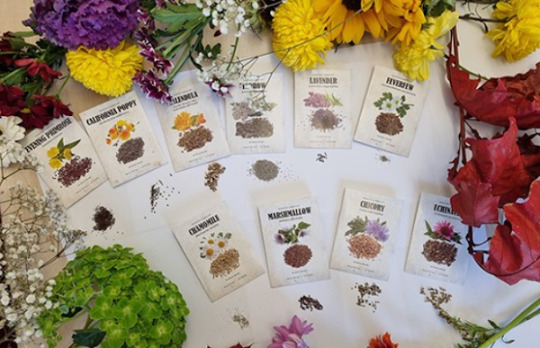
I’ve gathered all the seeds for growing these plants and placed them inside a Medicinal Garden Kit.
But I only managed to make 300 packages like this:
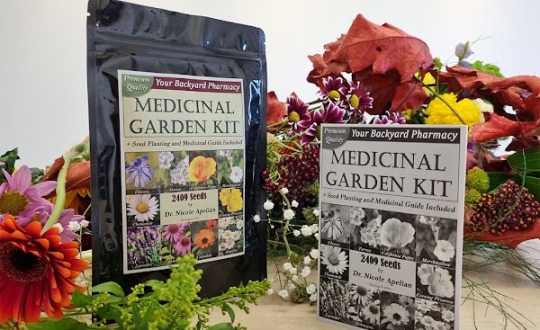
All these seeds have been handpicked from the very best plants.
What you see is what you get—seeds for powerful medicinal plants that are perfect for making your own remedies at home, now or in times of need.
This package offers you more than you could ask for: a natural antibiotic, a herbal painkiller, a wound healer, and many more.
Check out the entire list here.
P.S. However, there is a limited number of these seeds and the demand is huge–no wonder, with all that’s happening in the world right now. Click here to see if there are any left for you!
0 notes
Text
Medicinal Plants in Kitchen Garden: A Natural Health Remedy Hub
In today’s fast-paced world, people are increasingly turning to natural remedies for their health concerns. One such approach gaining popularity is the cultivation of medicinal plants in kitchen gardens. Having a range of beneficial plants just a few steps away from your cooking area not only adds beauty to your surroundings but also provides easy access to natural remedies for various ailments. In this article, we will explore the fascinating world of medicinal plants and how you can create your own health remedy hub in your kitchen garden.
Learn more secret information for medicinal plants in kitchen garden

Table of Contents
1. Introduction
2. Benefits of Medicinal Plants in Kitchen Gardens
3. Must-Have Medicinal Plants for Your Kitchen Garden
• 3.1 Aloe Vera
• 3.2 Basil
• 3.3 Mint
• 3.4 Rosemary
• 3.5 Thyme
4. How to Establish a Medicinal Kitchen Garden
• 4.1 Selecting the Right Location
• 4.2 Preparing the Soil
• 4.3 Choosing the Plants
• 4.4 Planting and Caring for Medicinal Plants
5. Harvesting and Utilizing Medicinal Plants
• 5.1 Harvesting Techniques
• 5.2 Drying and Storing
• 5.3 Methods of Utilization
6. Common Health Remedies from Kitchen Garden Plants
• 6.1 Aloe Vera for Skin Conditions
• 6.2 Basil for Digestive Health
• 6.3 Mint for Respiratory Relief
Learn more secret information for medicinal plants in kitchen garden
1. Introduction
Medicinal plants have been used for centuries to promote health and treat various ailments. With the rise in interest in natural remedies, integrating medicinal plants into your kitchen garden is an excellent way to have easy access to their healing properties. Not only do these plants offer therapeutic benefits, but they also add vibrancy and fragrance to your garden.
2. Benefits of Medicinal plants in Kitchen Gardens
By incorporating medicinal plants into your kitchen garden, you can reap a multitude of benefits. Firstly, you have a readily available source of natural remedies for common ailments. Whether it’s a mild headache, indigestion, or a minor cut, you can find relief in the plants growing just outside your door.
Secondly, growing medicinal plants promotes biodiversity in your garden. These plants attract beneficial insects and pollinators, contributing to the overall health of your garden ecosystem. Additionally, some medicinal plants, such as marigold and lavender, act as natural pest repellents, protecting your other garden plants.
Furthermore, cultivating a kitchen garden provides you with a sense of self-sufficiency. Instead of relying solely on store-bought remedies, you can take control of your health by growing and utilizing your medicinal plants.
Learn more secret information for medicinal plants in kitchen garden
3. Must-Have Medicinal Plants for Your Kitchen Garden
To get you started on your medicinal garden journey, here are five must-have plants that are easy to grow and offer a wide range of health benefits:
3.1 Aloe Vera
Aloe vera, known for its succulent leaves filled with gel, is a versatile medicinal plant. It possesses anti-inflammatory properties and is commonly used for soothing skin irritations, including sunburns and minor cuts.
3.2 Basil
Basil is not only a popular culinary herb but also a medicinal powerhouse. It has antimicrobial and antioxidant properties, aids digestion, and can provide relief from common cold symptoms.
3.3 Mint
Mint is a refreshing herb with a cooling effect on the body. It helps alleviate digestive issues, relieves headaches, and clears congestion. Peppermint and spearmint are two common varieties to consider.
3.4 Rosemary
Rosemary is an aromatic herb known for its memory-enhancing properties. It also has antioxidant and anti-inflammatory effects, making it a valuable addition to your kitchen garden.
3.5 Thyme
Thyme is a versatile herb with antiseptic properties. It supports the immune system, aids in respiratory health, and can be used as a natural expectorant.
4. How to Establish a Medicinal Kitchen Garden
Creating a medicinal kitchen garden is an enjoyable and rewarding endeavor. Follow these steps to get started:
4.1 Selecting the Right Location
Choose a location for your garden that receives ample sunlight throughout the day. Most medicinal plants thrive in sunny conditions, although some can tolerate partial shade.
4.2 Preparing the Soil
Ensure that the soil in your garden is well-draining and rich in organic matter. Medicinal plants prefer loose, loamy soil, so consider amending your soil with compost or organic fertilizer.
4.3 Choosing the Plants
Research and select medicinal plants that are suitable for your climate and growing conditions. Consider factors such as water requirements, temperature tolerance, and space availability.
4.4 Planting and Caring for Medicinal Plants
Follow the planting instructions provided for each plant. Water them regularly, but avoid overwatering, as most medicinal plants prefer slightly drier soil. Monitor for pests and diseases, and take necessary measures to protect your plants.
Learn more secret information for medicinal plants in kitchen garden

5. Harvesting and Utilizing Medicinal Plants
To derive the maximum benefit from your medicinal garden, it is crucial to harvest and utilize the plants properly. Here are some guidelines:
5.1 Harvesting Techniques
Harvest medicinal plants when they are at their peak potency. For most herbs, this is when they are in full bloom but before they start to wilt. Use clean, sharp tools to avoid contamination.
5.2 Drying and Storing
To preserve the medicinal properties of the plants, dry them properly before storing. Hang them in a well-ventilated area away from direct sunlight. Once dry, store them in airtight containers in a cool, dark place.
5.3 Methods of Utilization
Medicinal plants can be utilized in various ways, including making herbal teas, tinctures, salves, or poultices. Research and experiment with different methods to find what works best for each plant and health concern.
Learn more secret information for medicinal plants in kitchen garden
6. Common Health Remedies from Kitchen Garden Plants
Here are some examples of health remedies that can be derived from medicinal plants commonly found in kitchen gardens:
6.1 Aloe Vera for Skin Conditions
Aloe vera gel can be applied topically to soothe sunburns, rashes, and minor skin irritations.
6.2 Basil for Digestive Health
Basil leaves can be brewed into a tea to aid digestion, relieve bloating, and reduce stomach cramps.
6.3 Mint for Respiratory Relief
Prepare a mint-infused steam inhalation to clear nasal congestion and ease respiratory discomfort.
Learn more secret information for medicinal plants in kitchen garden
0 notes